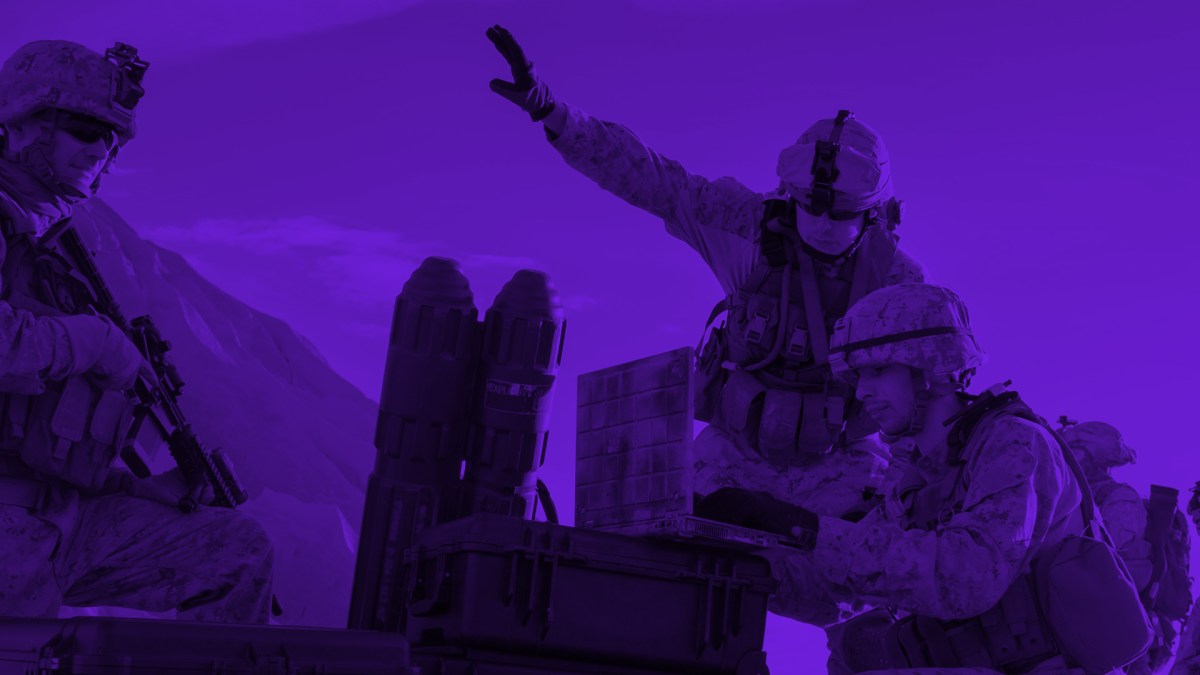- Sponsored
- Modernization
AWS DOD Director Liz Martin on how cloud is transforming defense missions

A technologist by trade, few things spark Liz Martin’s imagination more than using the latest technology to solve complex mission challenges.
So by almost any measure, she landed the ideal assignment four years ago, when Amazon Web Services (AWS) hired her to help the U.S. Department of Defense (DOD) gain a deeper understanding of the art of the possible using cloud technologies.
That opportunity took on new significance in March, when AWS promoted her to lead all of its global business with the Defense Department.
Since her days as a developer, and later as a solut

Liz Martin, DOD Director, AWS
ions architect in the telecom sector, “I always understood the need to work backwards from customers’ challenges,” Martin says. In her role with AWS, that means working backwards from defense missions. “The DOD has made significant progress in adopting cloud technologies in the time since I joined AWS. But as the security landscape continues to evolve, it remains critical for defense agencies to stay ahead of the emerging threats with the latest technology developments.”
What struck Martin most about the Defense Department when she first joined AWS was the critical nature of DOD’s mission. “DOD’s most sensitive missions pose different challenges than running a back-office IT system. When our warfighters are in the field or at the tactical edge, those missions leave no room for failure.”
According to Martin, cloud technologies are helping DOD agencies address challenges such as the need for speed, resiliency and reliability, as well as supporting operations on a global scale.
“While our mission is focused on technology delivery, we have a similar commitment to the idea that our warfighters deserve access to the best technology in the world. And I think that resonates with our DOD customers and with the defense community at large.”
Need for speed
“One of the areas that we are helping the DOD is around speed,” she says. Pentagon and military leaders understand it’s critical “to accelerate the speed to adopting innovative technologies — to continue to stay ahead. It’s a very challenging global environment, and technology can provide a significant edge in a way that it hasn’t in the past.”
One of the key components to achieving that edge, she says, revolves around gathering and analyzing data faster and where it’s needed most.
“All of the server power in the world isn’t going to deliver your mission outcomes if you don’t have the data you need available to you when and where you need it,” says Martin. So, AWS is working with DOD teams on ways to integrate sensor data in austere environments and the so-called tactical edge.
“Analytics at the edge is very important because critical missions require an incredible number of sensors, diverse areas for collecting data, and the ability to make sense of that sensor data to make decisions in real time,” says Martin.
“We have a variety of products, like our ruggedized AWS Snowball Edge and AWS Snowcone computing and storage devices — ranging in size from a Kleenex box to a piece of carry-on luggage — that can be deployed in forward positions to create a local cloud,” she explains. “They can process all of that data locally, in real time, and also upload it into one of our larger regional data stores or analytics platforms, when conditions permit.”
Another problem the military faces when it comes to IT solutions is its massive scale.
AWS is helping DOD develop creative solutions to take the cloud to austere environments while also utilizing secure cloud computing regions to handle the large scale of the military’s IT requirements.
Reimagining what’s possible
Martin says AWS continues working with defense and military leaders to better understand the full capabilities available through the cloud, as well as how those capabilities might be put to more effective use.
“There are still a lot of folks who think the cloud is just a server in someone else’s location,” she recalls. “The notion of expandable compute and storage capabilities is certainly part of the story. What’s more compelling are the high-value activities that customers can achieve by leveraging the AWS cloud and the functions it offers, like high performance computing and real-time analytics,” she says.
At the same time, she also sees many pockets of cloud-based innovation through her work with the U.S. Army, U.S. Air Force, U.S. Navy, U.S. Space Force, and Combatant Commands.
She credits defense officials for tackling significant problems over the past three years, including “some very large workloads moving into the cloud at all classification levels — as well as massive enterprise IT systems where scale is essential.”
DOD agencies can now move classified and mission-critical IL 6 workloads securely into AWS’s exclusive Secret Region cloud facility. Those and other initiatives promise to give defense officials greater speed and flexibility as they continue to scale up digital warfare capabilities and focus on initiatives like the Joint All-Domain Command and Control (JADC2) program.
Martin adds that AWS is committed to helping DOD customers develop their workforces, as well as supporting veterans, reservists and military families at Amazon. There are more than 40,000 veterans and military spouses employed at Amazon across the United States. “We find that many of the qualities that are foundational to military service align well with our Amazon culture,” Martin says.
What’s different today than when Martin first started her role at AWS, she adds, is the extent to which DOD mission owners are realizing the benefits of cloud technology. “By eliminating the undifferentiated heavy lifting of the underlying IT infrastructure, the DOD can focus on delivering its critical missions,” Martin says.
Learn how AWS can help your agency capitalize on today’s cloud.
Read more insights from AWS leaders on how agencies are using the power of the cloud to innovate.

This story was featured in FedScoop Special Report: How AWS Helps Government Innovate - Presented by AWS






